Specifications and features
As well as the Leica-branded 10x zoom, the ZS100/TZ100 has 5-axis Hybrid OIS and adopts the maker’s quick-to-focus Depth from Defocus (DFD) AF technology. Along with a 3-inch touchscreen LCD with 1.04 M-dot resolution, there’s a 1.16M-dot electronic viewfinder as well. Continuous shooting at up to an impressive 50 fps is possible with a low-vibration electronic shutter option, falling to a still-respectable 10 fps with the mechanical shutter (6 fps with AF). Video is another of the ZS100/TZ100’s strong points. It has internal recording of UHD 4K clips at 100 Mbps at 25/30p and 24p, as well as Full HD 1080 at 25/30/60p, and there’s a high-speed 1080/120p option as well.
The new model measures 4.37 x 2.56 x 1.73” / 111 x 65 x 44mm and weighs 0.69 lb / 312g with battery and SD card. The ZS100/TZ100 is available now at a price of $649 (USD).
- 20.8-Mpix full-frame CMOS sensor
- Venus image processor
- Leica DC Vario-Elmarit 25-250mm equivalent zoom
- 5-axis Hybrid OIS, DFD
- 3” 1.04 M-dot touchscreen LCD monitor
- 1.16M-dot electronic viewfinder
- 4K UHD video at 30/25/24p
- ISO 25,600
- 6 fps shooting in RAW with AE/AF
- WiFi with NFC
Measurements: Rival for best in class
The 1-inch type 20-Mpix BSI sensor in the Lumix DMC-ZS100 performs very well and is highly competitive for its class. At base, it has excellent color depth measured at 22.8 bits, a strong low ISO dynamic range of 12.5 EV, and an excellent low-light ISO score of 559 ISO. The results rank the TS100 alongside the best-of-class 1-inch type sensors, including the Sony RX10 II and RX10 III, as well as the compact RX100 IV and the DxO ONE Apple iPhone add-on.
Comparison 1: Panasonic Lumix DMC-ZS100 vs. Panasonic Lumix DMC-FZ1000: Advances on previous sensor
The ZS100/TZ100 performs exceptionally well for its class; however, the results only just slightly better than the earlier FZ1000, equipped with a similar 1-inch type 20-Mpix sensor. While the ZS100 sees some advances in color sensitivity, not just at base but throughout the ISO range, it has close to identical SNR 18%, with just a marginal increase at base due to a lower measured ISO value and very slightly lower SNR at its maximum of ISO 25600. Nevertheless, the advances are enough to improve the dynamic range, an important consideration for travel photography and landscapes. Over the FZ1000, the new model sees around an +0.7 EV advantage on average at all ISOs, save for ISOs at and above ISO12800. Although welcome, the advances in sensor performance are incremental.
Comparison 2: Panasonic Lumix DMC-ZS100 vs. Sony Cyber-shot DSC-RX100 IV vs. Canon PowerShot G7 X
While the Panasonic has excellent sensor performance, it is up against two similar products from Canon and Sony. At around $800, the Sony Cyber-shot DSC RX100 IV is the more expensive of the three and it has an arguably less-versatile 24-70mm equivalent lens, albeit much faster at f/1.8-2.8. The Canon PowerShot G7 X is another with a smaller but faster 24-100mm f/1.8-2.8 zoom, and like the Sony, features a flip-up rear LCD. But while it’s similar in price to the Panasonic, it lacks both a built-in viewfinder and 4K video capability (replicated in the new, yet untested G7X II). Both rivals share similar best-in-class sensor performance, however, and there’s very little in sensor performance between them. The Canon has some very slight measurable advances in the lab with regard to color sensitivity and dynamic range at low ISO, but the differences wouldn’t be noticeable in normal use. The Sony, on the other hand, has lower noise and slightly better DR at ISO 6400, thanks to smoothing, but it’s arguable if that’s an advantage.
Conclusion
The Panasonic Lumix DMC-ZS/TZ100 appears to share the same sensor or at least one similar sensor to that of both the Sony Cyber-shot DSC-RX100 IV and the Canon PowerShot G7 X. However, rather than offering a similar lens, it adds a 10x optical zoom — and a Leica-branded model at that — which makes it an attractive alternative. While both Panasonic, Sony, and now Nikon make larger models with longer zooms using a 1-inch type sensor, the Lumix ZS/TZ100 is a unique proposition. With its small size, built-in viewfinder (albeit not quite up to the Sony RX100 IV’s), and the addition of 4K (UHD) video, the Panasonic ZS/TZ100 is a well-rounded model that aims to offer something different than its rivals.


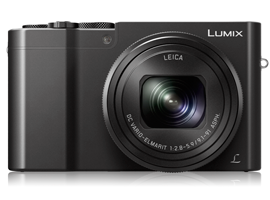



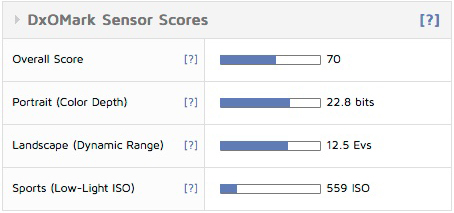
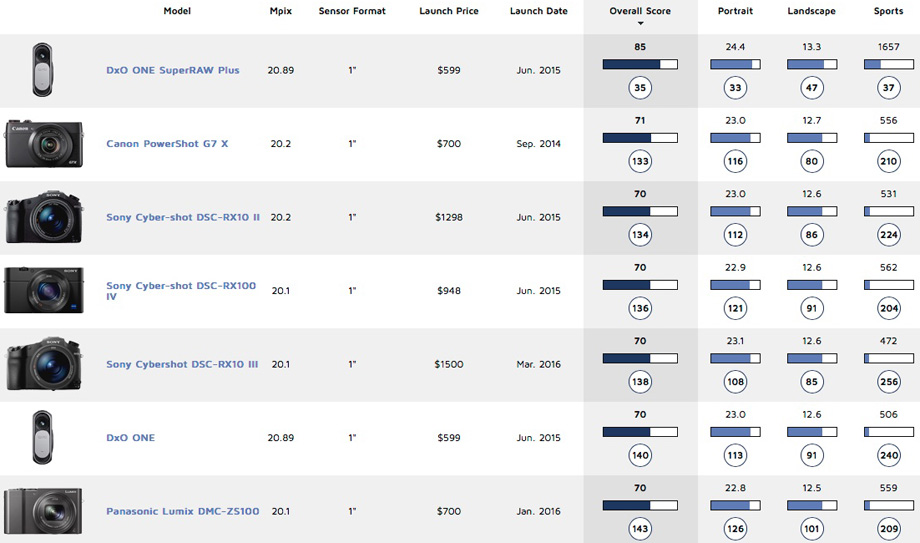
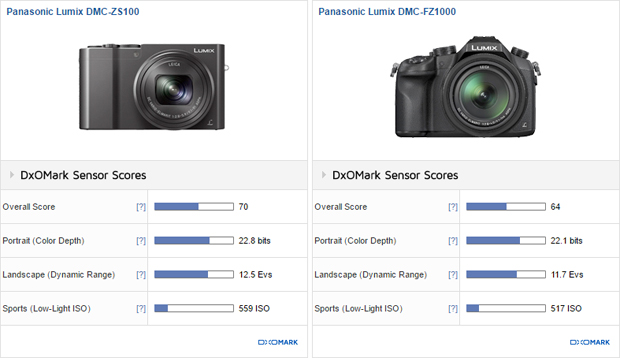
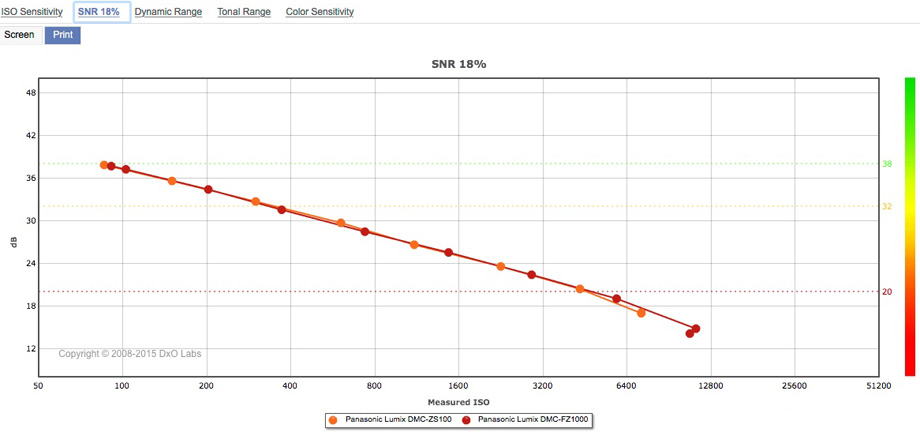

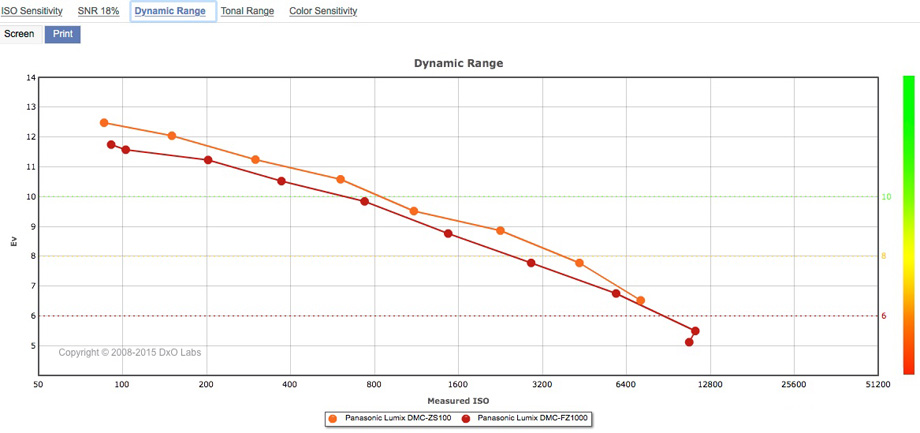
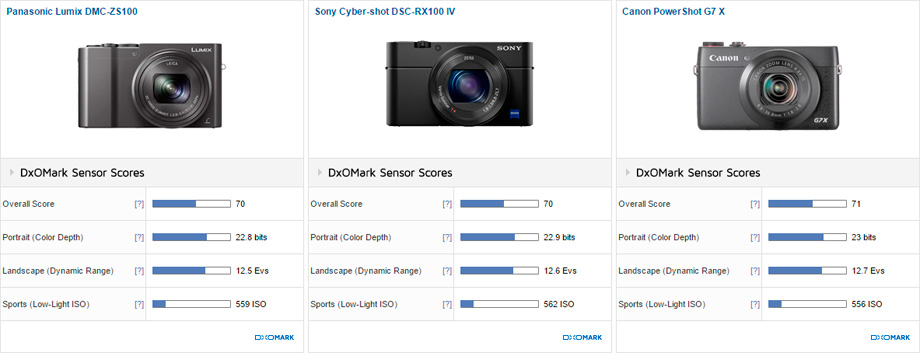
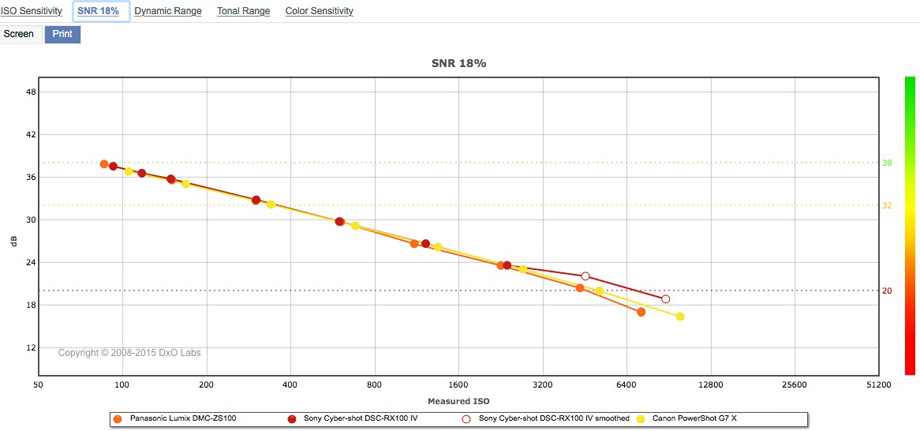
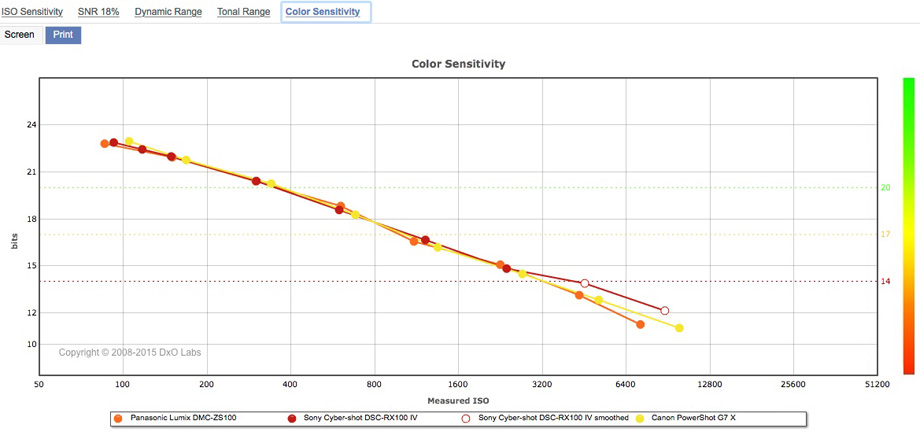
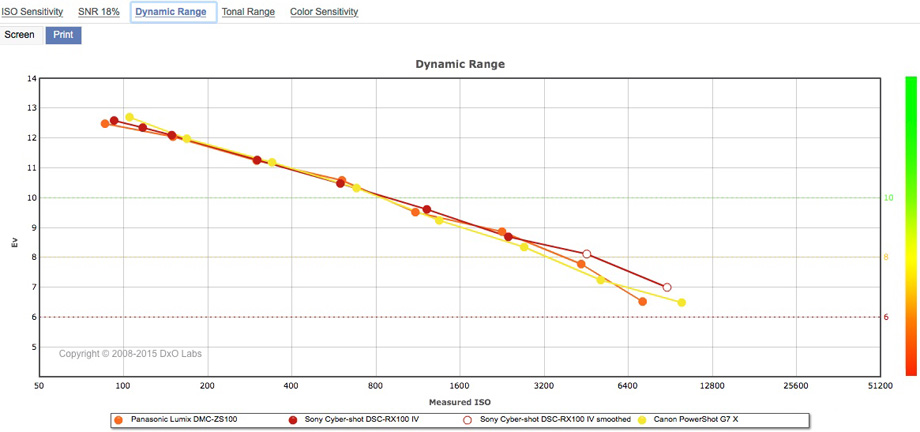
DXOMARK encourages its readers to share comments on the articles. To read or post comments, Disqus cookies are required. Change your Cookies Preferences and read more about our Comment Policy.